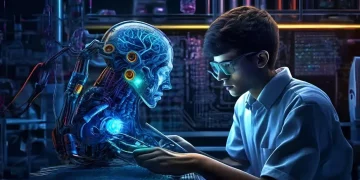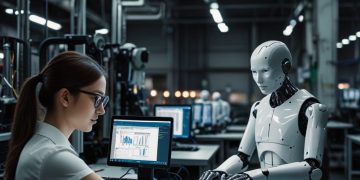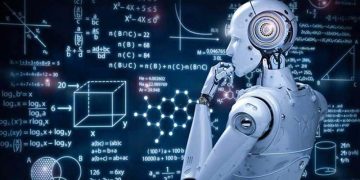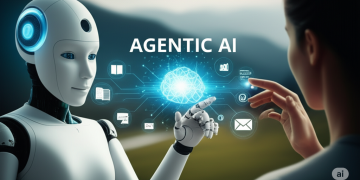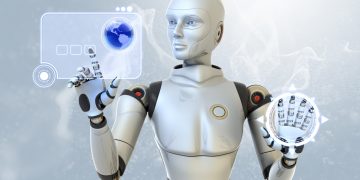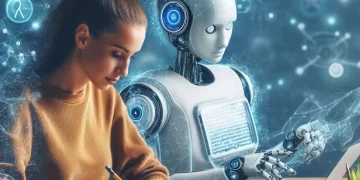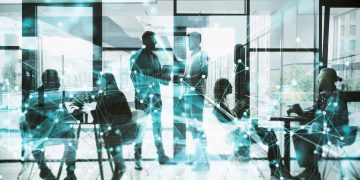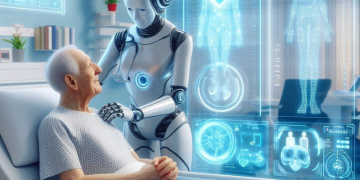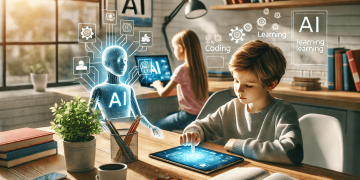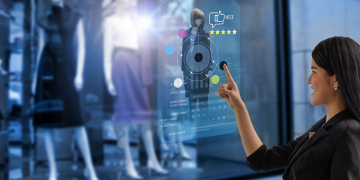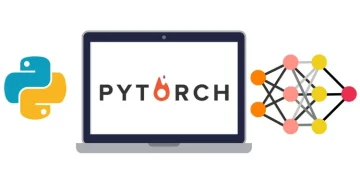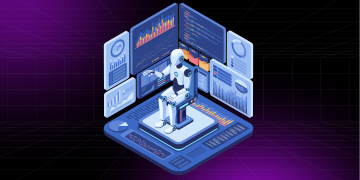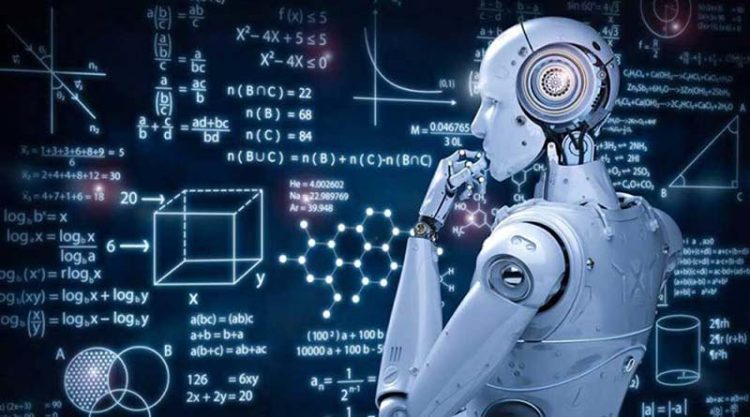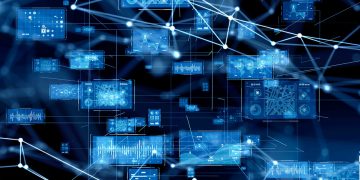Introduction
Artificial intelligence (AI) and machine learning (ML) have made remarkable strides in recent years, largely due to advances in supervised learning, where models are trained using large amounts of labeled data. However, labeling data at scale is a time-consuming, expensive, and sometimes impractical task. This challenge has given rise to self-supervised learning (SSL), an innovative paradigm that allows models to learn from vast amounts of unlabeled data by constructing their own supervisory signals from the data itself.
Self-supervised learning has emerged as one of the most exciting developments in the machine learning field. It bridges the gap between supervised learning and unsupervised learning, offering a unique approach where the model generates its own labels from the data, enabling it to learn rich representations without relying on human-annotated labels. SSL has been instrumental in areas such as computer vision, natural language processing, and speech recognition, enabling AI systems to leverage large, unlabeled datasets and improve performance without extensive manual annotation.
This article delves into the rise of self-supervised learning, exploring its methodologies, applications, and the factors that have fueled its rapid growth. We also examine its potential to revolutionize the way AI systems learn and the challenges that still remain in unlocking its full potential.
1. Understanding Self-Supervised Learning
What Is Self-Supervised Learning?
At its core, self-supervised learning refers to a form of unsupervised learning where a model learns to predict parts of the data based on other parts of the same data. Unlike supervised learning, where the model is trained on data with predefined labels (e.g., images labeled with categories or text labeled with sentiment), SSL uses unlabeled data and constructs its own supervisory signals. The key idea is to design a pretext task, where the model predicts a portion of the data using another portion. For example, in an image, the model might predict missing parts of the image or predict the transformation applied to an image (such as rotation or color change).
SSL can be seen as a bridge between unsupervised learning (where the model has no labels to guide learning) and supervised learning (where the model relies on labeled data). It allows the model to learn from unlabeled data by leveraging the structure inherent in the data itself, such as spatial relationships, temporal dependencies, or contextual clues.
The Self-Supervised Learning Paradigm
Self-supervised learning typically follows a few basic steps:
- Pretext Task: A task is designed where the model is encouraged to make predictions about the data itself. These tasks are not directly related to the final objective but are designed to help the model learn useful features.
- Representation Learning: The model uses the pretext task to learn useful data representations (i.e., features that capture important aspects of the data).
- Fine-Tuning: After learning representations through self-supervised learning, the model can be fine-tuned on a specific downstream task, such as classification or object detection, using a smaller amount of labeled data.
Unlike traditional approaches, where the model learns from explicit supervision, SSL encourages learning from latent structures in the data, such as temporal sequences in video, context in text, or patches in images.
2. Key Techniques in Self-Supervised Learning
Contrastive Learning
One of the most prominent approaches in self-supervised learning is contrastive learning, where the model learns to distinguish between similar and dissimilar data points. In contrastive learning, the model is trained to map similar data points (e.g., different augmented views of the same image) closer together in the feature space, while mapping dissimilar points further apart. This approach has been widely used in computer vision tasks.
A popular example of contrastive learning is SimCLR (Simple Contrastive Learning of Representations), a framework for training deep neural networks to learn image representations without labeled data. The idea is to create positive pairs by augmenting the same image in different ways (such as cropping, rotating, or changing colors) and negative pairs by sampling different images. The model learns to bring the positive pairs closer together while pushing the negative pairs further apart in the learned feature space.
Predictive Learning
Another well-established method in SSL is predictive learning, where the model learns to predict missing or obscured portions of data. This approach is particularly useful in tasks such as language modeling or image inpainting. The idea is to hide or mask a portion of the data and train the model to predict it. A classic example in natural language processing (NLP) is Masked Language Modeling (MLM), used in models like BERT (Bidirectional Encoder Representations from Transformers). In MLM, a portion of the words in a sentence is masked, and the model learns to predict the masked words based on the surrounding context.
In computer vision, a similar approach known as image inpainting is used, where parts of an image are masked, and the model is tasked with reconstructing the missing regions.
Generative Models
Generative models, such as autoencoders and Generative Adversarial Networks (GANs), are also used in self-supervised learning. These models learn to generate data (images, text, etc.) from an input distribution, and the model is trained to reconstruct the input data from a compressed, lower-dimensional representation. Autoencoders, for example, compress the input data into a latent space and then reconstruct it as accurately as possible. By learning to reconstruct the data, the model learns meaningful features that can be used for downstream tasks.
Masked Autoencoders (MAE), a variant of autoencoders, have become a powerful tool for self-supervised learning, particularly in vision tasks. MAE works by masking a large portion of the input image and training the model to predict the missing pixels, learning useful features from the remaining visible parts.
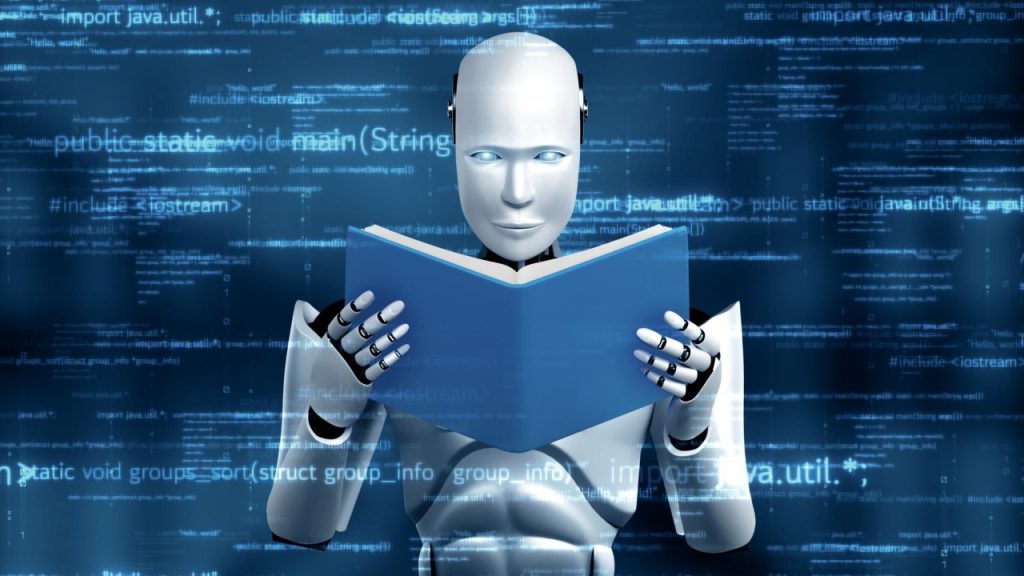
3. Applications of Self-Supervised Learning
Self-supervised learning has shown great promise in various fields of AI, ranging from computer vision to natural language processing and even multimodal learning. Below are some key areas where SSL has made a significant impact:
Computer Vision
In the field of computer vision, self-supervised learning has been particularly transformative. Traditionally, image classification, object detection, and segmentation tasks required vast amounts of labeled data, which is expensive and time-consuming to collect. However, SSL methods like SimCLR, MoCo (Momentum Contrast), and BYOL (Bootstrap Your Own Latent) allow models to learn rich visual representations from unlabeled data, significantly reducing the reliance on labeled datasets.
Self-supervised learning has also shown success in image generation, where models can be trained to generate high-quality images from a low-dimensional latent space, without requiring labeled data for each image.
Natural Language Processing
In natural language processing (NLP), self-supervised learning has dramatically advanced the state of the art. The success of models like BERT and GPT is largely due to self-supervised techniques, such as masked language modeling (BERT) and autoregressive modeling (GPT), which allow models to learn from large amounts of text data without requiring manual annotations.
Self-supervised learning has enabled advancements in tasks like machine translation, text summarization, question answering, and sentiment analysis, all while minimizing the need for labeled datasets.
Speech Recognition and Audio Processing
Self-supervised learning is also making strides in the field of speech recognition and audio processing. SSL models are trained to predict parts of audio signals or generate representations of speech, which can then be fine-tuned for specific tasks like speech-to-text or speaker identification. This is especially useful in scenarios where large amounts of labeled audio data are difficult to obtain.
Multimodal Learning
Multimodal self-supervised learning, which involves combining multiple data modalities (e.g., text, image, video, and audio), is becoming increasingly important. Models like CLIP (Contrastive Language-Image Pretraining) have shown how text and image data can be used together in a self-supervised manner to learn rich multimodal representations. This has broad applications in areas such as image captioning, video analysis, and cross-modal retrieval.
4. The Benefits of Self-Supervised Learning
Reduction in the Need for Labeled Data
One of the most significant advantages of self-supervised learning is its ability to work with unlabeled data. Collecting and labeling data is expensive, and in many domains, labeled data is scarce or inaccessible. Self-supervised learning allows models to leverage large amounts of unlabeled data, which are often readily available, especially in fields like image, text, and audio processing.
Improved Generalization
SSL has shown that models trained on large, diverse datasets using self-supervision can generalize better to a wide range of downstream tasks. Since the pretext tasks in SSL are often designed to capture general patterns and representations, models trained in this way tend to have richer, more transferable features that can be applied across various domains.
Scalability and Efficiency
Self-supervised learning enables models to scale efficiently with data. As new data becomes available, the model can continue learning from it without needing extensive retraining or manual supervision. This makes SSL especially useful for dynamic environments where data constantly evolves.
5. Challenges and Limitations of Self-Supervised Learning
Quality of Learned Representations
Although self-supervised learning can significantly reduce the need for labeled data, the quality of the learned representations can sometimes fall short of what is achievable with supervised learning. The representations learned by SSL models might not always be perfectly aligned with the downstream tasks they are applied to, which can lead to suboptimal performance in some cases.
Data Efficiency
While self-supervised learning reduces the need for labeled data, it still requires substantial amounts of unlabeled data to train models effectively. In some cases, the sheer volume of data needed for SSL can still be a limiting factor.
Computational Complexity
Training self-supervised models, especially large-scale models in computer vision and NLP, can be computationally intensive. The need for large amounts of data and significant computational power makes SSL approaches resource-heavy and challenging to scale for some applications.
6. The Future of Self-Supervised Learning
Continued Growth in Applications
As self-supervised learning continues to evolve, its applications will expand across new domains and tasks. We can expect SSL to make further breakthroughs in areas like autonomous driving, healthcare, robotics, and creative industries. Additionally, multimodal SSL will open up even more possibilities for cross-domain learning, such as real-time video synthesis, emotion detection, and augmented reality.
Improved Models and Architectures
Future advancements in SSL will likely focus on improving model efficiency, data efficiency, and the quality of learned representations. Researchers are exploring new architectures and methods, such as contrastive predictive coding (CPC) and unsupervised pretraining techniques, to address existing challenges and push the boundaries of self-supervised learning.
Integration with Other Learning Paradigms
Self-supervised learning will also likely be integrated with other paradigms, such as reinforcement learning and transfer learning, to create more powerful and adaptable AI systems. By combining the strengths of different learning approaches, SSL models can become more robust, flexible, and applicable to a wider variety of real-world problems.
Conclusion
Self-supervised learning has emerged as a game-changer in the field of artificial intelligence. By allowing models to learn from unlabeled data, SSL has reduced the reliance on costly and time-consuming manual annotations, enabling the development of more scalable, efficient, and generalized AI systems. With applications ranging from computer vision and NLP to speech recognition and multimodal learning, SSL is poised to continue transforming industries and advancing the frontiers of AI research.
As the field of self-supervised learning evolves, it will likely lead to even greater breakthroughs in machine learning, paving the way for more intelligent and autonomous systems across a broad spectrum of domains. With its potential to unlock new forms of data representation and make AI more accessible, self-supervised learning is indeed on the rise, and its impact will only grow in the coming years.


